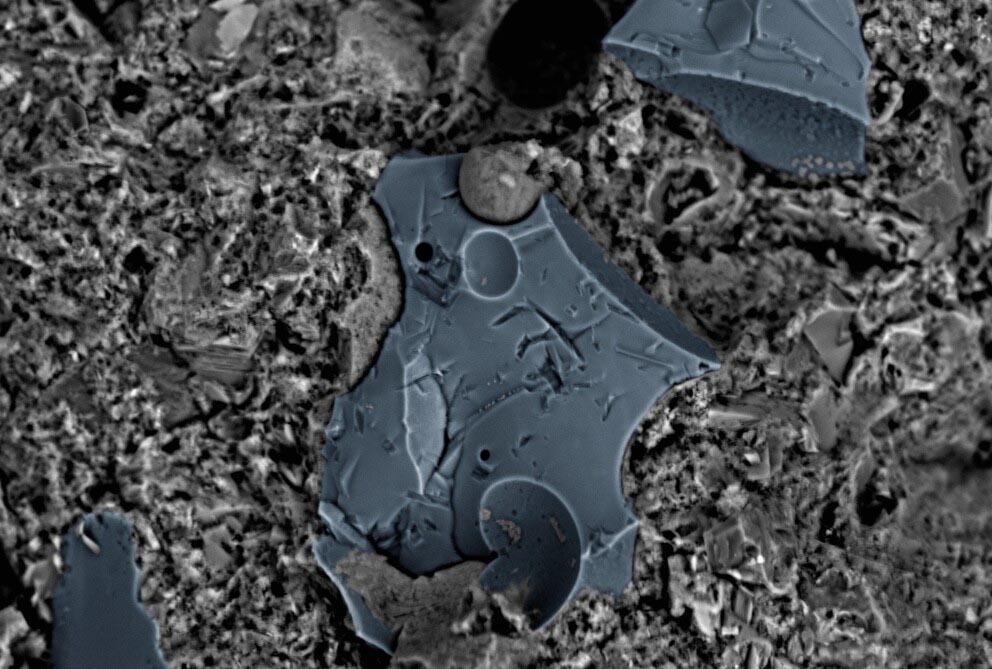
Lunar concrete similar to this sample could be used one day to build structures on the moon, but researchers need to understand its behavior in microgravity first. In this colorized microscopic image, artificial regolith (blue) is mixed with Portland cement (gray). IMAGE: PETER COLLINS
NASA grant to enable explorations of concrete behavior in Moon-like gravity
9/23/2021
By Gabrielle Stewart
UNIVERSITY PARK, Pa. — Concrete is a promising material for building structures on the moon or even Mars due to its strength, quick forming and ability to be made with ingredients already existing in those remote places. It behaves differently, however, in these low-gravity environments, and testing efforts are currently limited by small sample sizes for testing in the International Space Station (ISS).
Now, with a two-year, $192,883 grant from NASA’s Physical Sciences Research Program, a Penn State researcher plans to test the behavior of cement forming in microgravity. Namiko Yamamoto, associate professor of aerospace engineering and principal investigator, will use a simulation to connect the dots between these small-scale physical experiments and the behavior of large amounts of concrete in a future microgravity setting.
“The challenge is that what we observe in small-scale testing is not reproduced at the larger scale; there’s a missing link,” Yamamoto said. “That’s where our modeling comes in. We can start with a small image, integrate it into a larger scale and then begin to optimize processing conditions and adjust other parameters.”
To begin her research, Yamamoto plans to analyze microscopic images collected by Aleksandra Radlińska, associate professor of civil and environmental engineering at Penn State, as part of a previous study. The images show microscopic differences between concrete cured in microgravity aboard the ISS and concrete cured in Earth’s gravitational conditions. Microgravity concrete contained trapped air bubbles and was much more porous than conventional concrete. Having identified these features, Yamamoto will incorporate the sample images of the space concrete into a model to estimate the physical properties of the concrete, such as strength against crushing or pulling forces, fracture behaviors and more.
Yamamoto will use the NASA Multiscale Analysis Tool (NASMAT), which simulates material behavior as a function of the small-scale structure features, to analyze the simulated concrete samples. She will examine how differences in factors such as size and porosity affect the behavior of the microgravity concrete. This testing will inform explorations of other conditions, according to Yamamoto.
“With a simulation approach, you can also address the optimization of the structure in relation to the experiment,” Yamamoto said. “We can optimize the processing conditions, integrate factors like cost and development time, adjust performance of the concrete versus time it takes to deliver and much more — it’s quite exciting.”
During the research, Yamamoto will collaborate with Evan Pineda, aerospace research engineer, and Brett Bednarcyk, materials research engineer, both at NASA Glenn Research Center. Findings from the project could benefit NASA’s Artemis program, which aims to establish an outpost on the Moon for eventual travel to Mars.
Collaborators on this project include Radlińska, Pineda, Bednarcyk and Peter Collins, a civil engineering doctoral candidate.



